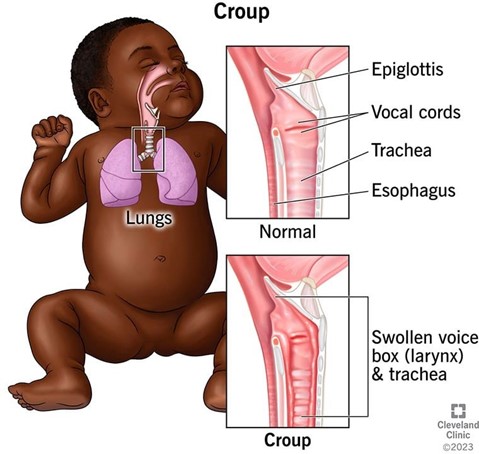A client is receiving palliative care, and death is anticipated within the next 24 hours. The practical nurse (PN) observes that the client's legs have a mottled appearance. What should the PN apply to the client's legs?
Heating pad
Body lotion
Soft blanket
Moist clothes
The Correct Answer is C
The correct answer is Choice C. Soft blanket.
Choice A rationale:
A heating pad should not be applied to the client's legs with a mottled appearance. A mottled appearance indicates poor circulation, and applying heat could potentially worsen the situation by dilating blood vessels and further reducing blood flow to the extremities.
Choice B rationale:
The body lotion is not appropriate in this situation. While it may help moisturize the skin, it will not address the underlying circulation issues causing the mottled appearance. Moreover, applying lotions to areas with compromised circulation can be harmful.
Choice C rationale:
The correct choice. A soft blanket can be applied to the client's legs with a mottled appearance to provide warmth and comfort. It is essential to keep the client comfortable during palliative care, and a soft blanket can help maintain a suitable temperature without causing harm.
Choice D rationale:
Moist clothes are not indicated in this situation. They may potentially worsen the mottled appearance by adding moisture to the skin, and it won't address the circulation issues causing the discoloration.
Nursing Test Bank
Naxlex Comprehensive Predictor Exams
Related Questions
Correct Answer is C
Explanation
Croup is a respiratory infection that causes inflammation and narrowing of the airway, resulting in a barking cough, hoarseness, and stridor. The PN should monitor the child's oxygen saturation level via pulse oximetry, as it can indicate the severity of the airway obstruction and the need for supplemental oxygen or other interventions.

The other options are not correct because:
A. Instructing the mother to play with the child for stimulation and distraction may worsen the child's condition, as it can increase his respiratory demand and anxiety.
B. Administering a dose of acetaminophen as needed may help reduce fever or pain, but it does not address the underlying cause of croup or improve airway patency.
D. Encouraging the child to drink adequate amounts of fluids may help prevent dehydration and thin the secretions, but it does not relieve the inflammation or narrowing of the airway.
Correct Answer is C
Explanation
The correct answer is choice C. Consult with the client about the reasons for his refusal to be weighed.
Choice A rationale:
Including "Noncompliance”. as a priority problem in the client's plan of care assumes the client's refusal to be weighed is intentional and willfully disobedient. This may not be the case, and labeling the client as noncompliant could create a negative atmosphere, hindering effective communication and care.
Choice B rationale:
Advising the UAP to re-attempt the daily weight after the client eats breakfast does not address the underlying reason for the client's refusal. Additionally, there is no evidence suggesting that weighing the client after breakfast will improve the situation.
Choice C rationale:
Consulting with the client about the reasons for his refusal to be weighed is the most appropriate action. Open communication with the client can help identify any concerns or fears related to the weighing process. By understanding the client's perspective, the healthcare team can work together to find a solution that ensures the client's cooperation with the weight monitoring.
Choice D rationale:
Calculating the client's weight based on the 24-hour fluid intake and output is not a reliable method for obtaining an accurate weight measurement. Fluid volume overload can lead to fluid retention and may not accurately reflect the client's true weight.
Whether you are a student looking to ace your exams or a practicing nurse seeking to enhance your expertise , our nursing education contents will empower you with the confidence and competence to make a difference in the lives of patients and become a respected leader in the healthcare field.
Visit Naxlex, invest in your future and unlock endless possibilities with our unparalleled nursing education contents today
Report Wrong Answer on the Current Question
Do you disagree with the answer? If yes, what is your expected answer? Explain.
Kindly be descriptive with the issue you are facing.
